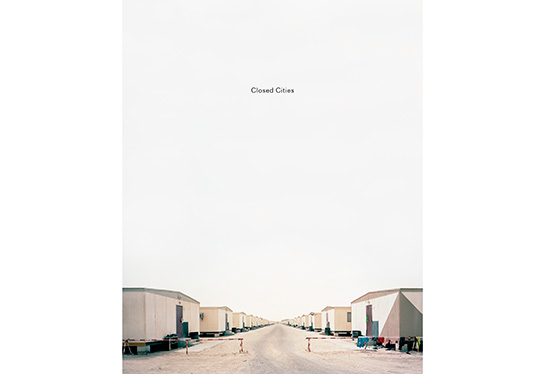Review: Closed Cities by Gregor Sailer

Our world divides into places that are public and that are private. The former includes a few that are both at the same time - they are public places, yet they’re closed off. These are the forbidden zones, areas the public - who might, on the surface, actually own them - are not allowed to enter. The term “closed city” originated in the Soviet Union (see this page), and it is still in use there, in slightly different form. Closed cities exist all over the world, places that require special permission to enter. Access can be restricted for military and/or security reasons, the latter connected to industrial activities, to the presence of refugees, or simply to the presence of people wealthy enough to be able to afford having a whole area of their own. (more)
For his book Closed Cities, Gregor Sailer visited a few of these in Russia, Azerbaijan, Qatar, Chile, Algeria/Western Sahara and Argentina. For example, Mirny is a town founded in the 1950s. It is located next to a truly gigantic open mine, almost a mile wide, a hole so huge that it literally sucked in various helicopters. Mirny is Russia’s diamond capitol. The impressive mine aside, what does a place like that look like? Sailer provides an answer.
In contrast, there are also photographs of several refuge cities in the Western Sahara, an area unable to support life on its own. Fighting over a stretch of desert seems like an insanity, yet it has not prevented this from happening - a war going on for decades now. What does that area look like? Again, Sailer went there, with his camera, to photograph.
What is striking about all of these places is the sheer futility that lies underneath the various reasons used to cordon them off. Why fight over a stretch of desert? Why spend enormous resources extracting diamonds from the earth? There are “good” reasons for all of that, I’m sure. But start thinking about it, and things stop making sense. The reasons become irrational and utterly banal at the same time. And it’s that very banality Sailer’s photographs expose. The photographs are not banal, the places are.
I’m tempted to think that given that banality governments might actually be better off giving full visual access to hidden sights: Who would imagine anything interesting going on in a place that looks perfectly banal?
Closed Cities; photographs by Gregor Sailer; essays by Walter Moser, Margit Zuckriegel, Wencke Hertzsch; 300 pages; Kehrer Verlag; 2013